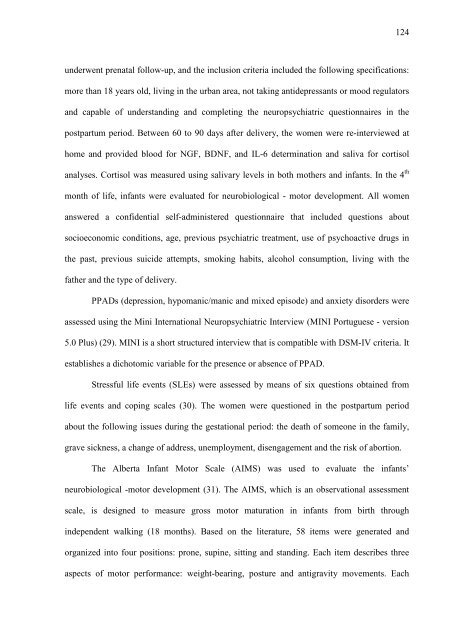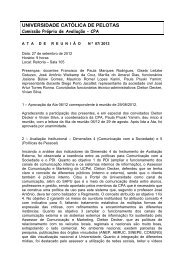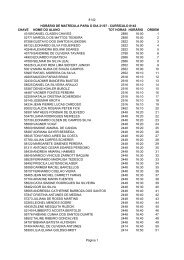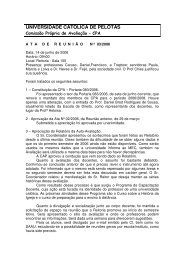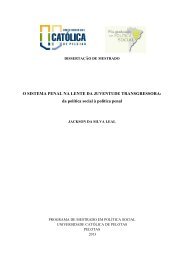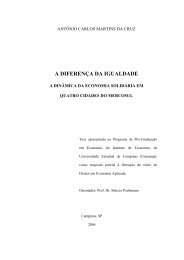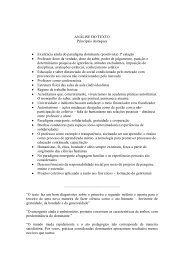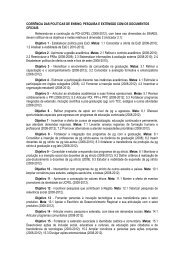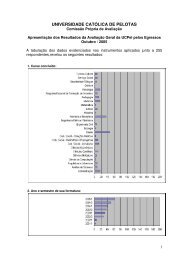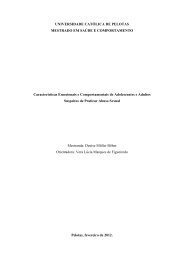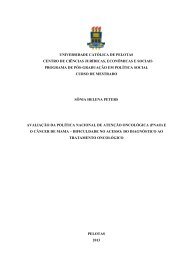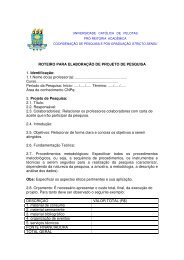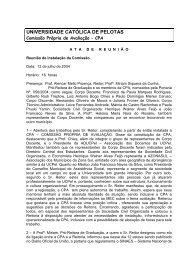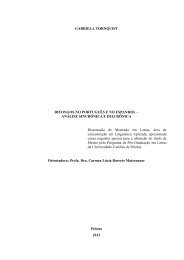Karen Amaral Tavares Pinheiro - Universidade Católica de Pelotas
Karen Amaral Tavares Pinheiro - Universidade Católica de Pelotas
Karen Amaral Tavares Pinheiro - Universidade Católica de Pelotas
Create successful ePaper yourself
Turn your PDF publications into a flip-book with our unique Google optimized e-Paper software.
124<br />
un<strong>de</strong>rwent prenatal follow-up, and the inclusion criteria inclu<strong>de</strong>d the following specifications:<br />
more than 18 years old, living in the urban area, not taking anti<strong>de</strong>pressants or mood regulators<br />
and capable of un<strong>de</strong>rstanding and completing the neuropsychiatric questionnaires in the<br />
postpartum period. Between 60 to 90 days after <strong>de</strong>livery, the women were re-interviewed at<br />
home and provi<strong>de</strong>d blood for NGF, BDNF, and IL-6 <strong>de</strong>termination and saliva for cortisol<br />
analyses. Cortisol was measured using salivary levels in both mothers and infants. In the 4 th<br />
month of life, infants were evaluated for neurobiological - motor <strong>de</strong>velopment. All women<br />
answered a confi<strong>de</strong>ntial self-administered questionnaire that inclu<strong>de</strong>d questions about<br />
socioeconomic conditions, age, previous psychiatric treatment, use of psychoactive drugs in<br />
the past, previous suici<strong>de</strong> attempts, smoking habits, alcohol consumption, living with the<br />
father and the type of <strong>de</strong>livery.<br />
PPADs (<strong>de</strong>pression, hypomanic/manic and mixed episo<strong>de</strong>) and anxiety disor<strong>de</strong>rs were<br />
assessed using the Mini International Neuropsychiatric Interview (MINI Portuguese - version<br />
5.0 Plus) (29). MINI is a short structured interview that is compatible with DSM-IV criteria. It<br />
establishes a dichotomic variable for the presence or absence of PPAD.<br />
Stressful life events (SLEs) were assessed by means of six questions obtained from<br />
life events and coping scales (30). The women were questioned in the postpartum period<br />
about the following issues during the gestational period: the <strong>de</strong>ath of someone in the family,<br />
grave sickness, a change of address, unemployment, disengagement and the risk of abortion.<br />
The Alberta Infant Motor Scale (AIMS) was used to evaluate the infants’<br />
neurobiological -motor <strong>de</strong>velopment (31). The AIMS, which is an observational assessment<br />
scale, is <strong>de</strong>signed to measure gross motor maturation in infants from birth through<br />
in<strong>de</strong>pen<strong>de</strong>nt walking (18 months). Based on the literature, 58 items were generated and<br />
organized into four positions: prone, supine, sitting and standing. Each item <strong>de</strong>scribes three<br />
aspects of motor performance: weight-bearing, posture and antigravity movements. Each


